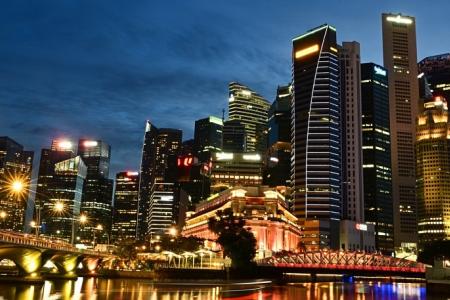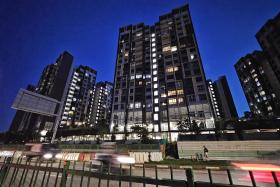More businesses to get reward for reducing electricity usage
More businesses will reap savings and earn rewards by lowering their energy usage during peak periods under an expanded programme by the Energy Market Authority (EMA).
For example, businesses that own battery energy storage systems (ESS) of a certain capacity can reduce the electricity they draw from the grid during peak periods by relying on their in-house batteries to run operations.
While a direct benefit of this programme is lower electricity costs and financial incentives for participating businesses, adjusting electricity demand in response to peaks will relieve stress on the grid during high-demand periods and unplanned outages.
This is especially important in the future when Singapore greens its electricity mix. Solar energy is intermittent due to cloud cover, and electricity imports can be potentially variable due to availability, market conditions, and transmission constraints.
EMA introduced this “demand flexibility” scheme through a two-year pilot in 2022, which included participants from energy-guzzling industries.
Announcing an expansion to the Demand Response programme on Oct 21, Deputy Prime Minister Gan Kim Yong said businesses with ESS and ComfortDelGro, which has electric vehicle (EV) charging stations, will be joining the programme.
He was speaking on the first day of the annual Singapore International Energy Week at the Sands Expo and Convention Centre.
Peak electricity demand usually happens in the afternoons, when commercial and industrial activities are running at full speed. When demand is high, wholesale prices from the Singapore Wholesale Electricity Market also rise.
Shifting electricity use to other times of the day can reduce wholesale electricity prices during peak periods as more expensive generation units need not be scheduled to run.
Between 2023 and mid-2024, the programme reaped more than $700 million in savings for electricity buyers, which include electricity retailers, said EMA.
Businesses eligible for the programme include commercial and industrial firms that buy their electricity from a retailer or from the wholesale electricity market instead of SP Services at the regulated tariff.
Those that own ESS with a capacity of between 1 megawatt (MW) and below 10 MW can join the programme by end-February 2025.
ComfortDelGro, with its nearly 1,000 charging stations, can respond to demand peaks by adjusting their charging speed or amount to balance the electricity grid’s supply.
According to a study commissioned by EMA, there is over 400 MW of demand flexibility potential that is untapped in Singapore – equivalent to powering 70,000 households in a year. More than 100 MW was realised in the two-year pilot.
Commercial sectors reliant on heating, ventilation, and air-conditioning, and industrial processes like gas production are among those with the scope to reschedule operations to off-peak times, said EMA.
Businesses can participate in the programme if they can offer to reduce their electricity consumption by at least 0.1 MW and respond to peak demand prompts on short notice of about three minutes.
Participants have to declare their usual levels of electricity consumption and how much they are willing to reduce.
Those who fully fulfil their commitment will receive one-third of the savings from the reduction in electricity prices. The amount is capped at $4,500 per megawatt-hour (MWh), which is the existing ceiling for wholesale prices. In 2023, the average incentive payment was around $2,800 per MWh, said EMA.
Those who deliver less than 80 per cent of the energy savings they committed to will be penalised. This threshold was revised from the 95 per cent during the pilot after feedback from participants.
Residents are also involved in reducing or shifting their electricity usage under a separate demand flexibility pilot which started in September. About 1,000 households with smart electricity metres can receive cash rewards for reducing electricity use during peak demand periods.
The authorities are also exploring how businesses and households can contribute electricity to the grid.
Singapore’s sources of electricity will be more varied as its power sector decarbonises. This means excess electricity from solar panels on private houses, ESS and electric car chargers islandwide can be fed to the grid in future. Households and businesses could also earn from doing so during high demand.
However, it may not be commercially viable for each device to individually provide services to the grid, said Mr Gan, who is also Minister for Trade and Industry.
He suggested that they can be gathered together to operate as a single unit providing energy and ancillary services. This single unit, existing in the virtual world, will serve as a “power plant” of sorts, with electricity coming from the people.
For example, this virtual “power plant” can direct excess energy generated from solar panels or ESS to common utilities, as well as heating and air-conditioning at another location.
To that end, EMA and SP Group will do research and development to deploy a 15 MW virtual unit that gathers solar photovoltaic sources and ESS. This unit will be part of the electricity market to evaluate its benefits to the power system.
EMA is also seeking proposals from the industry to explore the benefits of such virtual units.
This virtual “power plant” can also inject energy into the grid when there is a sudden loss of supply in the power system, such as outages.
Get The New Paper on your phone with the free TNP app. Download from the Apple App Store or Google Play Store now


